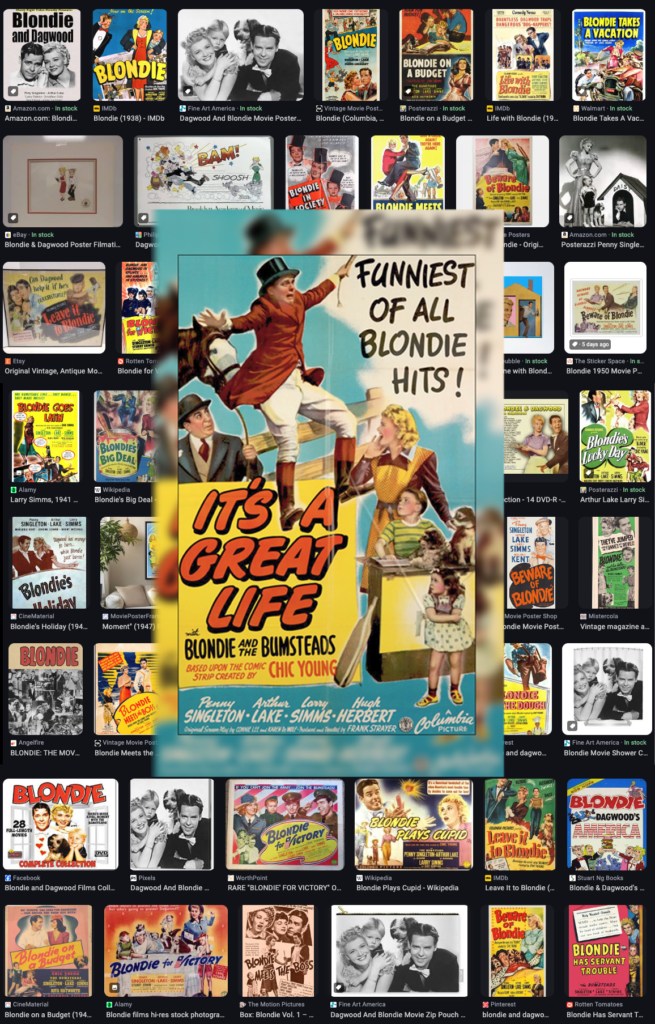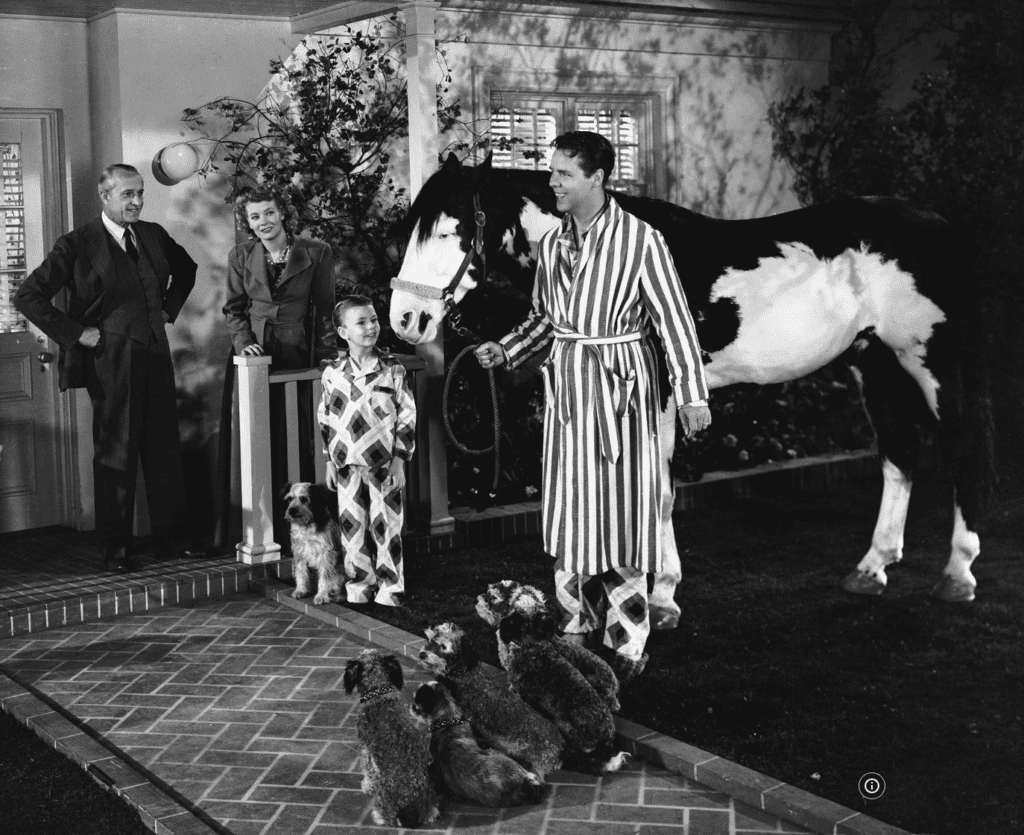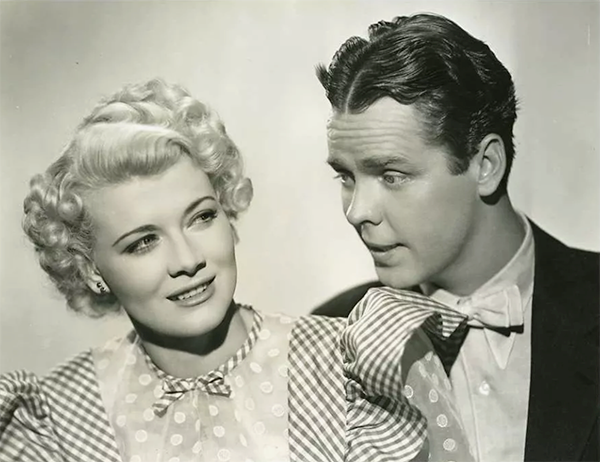
Newspaper comic strips as an art form pre-date the 20th Century, first appearing between 1895-98 in such publications as Joseph Pulitzer’s “New York World,” and William Randolph Hearst’s “New York Journal.” Viewed from one perspective, a comic strip is an original story board for a movie: characters plus action equals plot. This fact was not overlooked by the major studios, and hundreds, perhaps thousands, of drawn comics of all kinds have been adapted to film.
An obvious early example is Chic Young’s “Blondie,” which first appeared as a newspaper strip in September of 1930. The first Blondie movie was released in 1938, and the characters of sandwich-loving, nap-loving Dagwood and his beautiful blonde wife moved to radio in 1939.
The movie series and the radio program both ended in 1950, but the comic continues well into the 21st Century. There were 28 Blondie movies stretching over this 12-year period. All but two of them have Blondie in the movie name. Blondie Buys a Horse is not one of them since the title was changed to It’s a Great Life after the 1943 release. The black-and-white film is the 13th of the 28 Blondie films. Its working title during production was “Blondie Buys a Horse.” Exact reasons for the name change are unclear, but it may have been linked to the fact that Blondie does not buy a horse in the movie. Dagwood buys the horse.

The popularity of the Blondie movies continues today and all 28 are available on streaming services. Like the titles, the movies – run time for each was just over 1 hour — follow a tried but true formula. The same actors played the main characters for every film and radio broadcast: Penny Singleton as ‘Blondie’, Arthur Lake as ‘Dagwood’, and Daisy as ‘Daisy the Dog’.
Each of the movie’s plots are very busy, although each revolves around a central theme generally expressed in the title (“Blondie … Meets the Boss, Goes to College, Hits the Jackpot”). The busy business of the plot follows a “throw it against the wall” approach to comedy. A lot of gags are launched and a few of them stick.


Penny Singleton was first cast in movies as early as 1930. She is best known for her role in the Blondie films, although she also provided the voice of Jane Jetson in the 1962–63 animated series “The Jetsons.” She was the first woman to serve as president of an AFL-CIO union, serving two terms as president of the American Guild of Variety Artists.
Arthur Lake was a popular radio comedian and actor. Early in his career he was friends with newspaper magnet William Randolph Hearst and Hearst’s mistress Marion Davies. Lake married Ms. Davies “niece” in 1937, a woman rumored to be the natural daughter of Ms. Davies by Hearst.